
New siding can boost your home value, energy efficiency, and curb appeal. Learn about the cost to install shingle siding to budget appropriately.
Keep your to-do list short with no-fuss siding


Call a local siding pro to narrow down the best low-maintenance siding options for your home based on your climate, budget, and preferred look.
Vinyl and engineered wood are known for affordability and easy care, while fiber cement and stone offer durability and moderate pricing.
Stucco works best in hot, dry climates, while brick and steel have long lifespans but higher upfront costs.
Your home’s siding takes a beating year-round, with rainfall and moisture in the spring, intense UV radiation in the summer, and extreme weather that can bring blown debris to threaten the material. Choosing a low-maintenance siding not only increases your home’s curb appeal but also means you can enjoy it for years to come without much trouble or added maintenance costs to worry about, both of which mean added value.
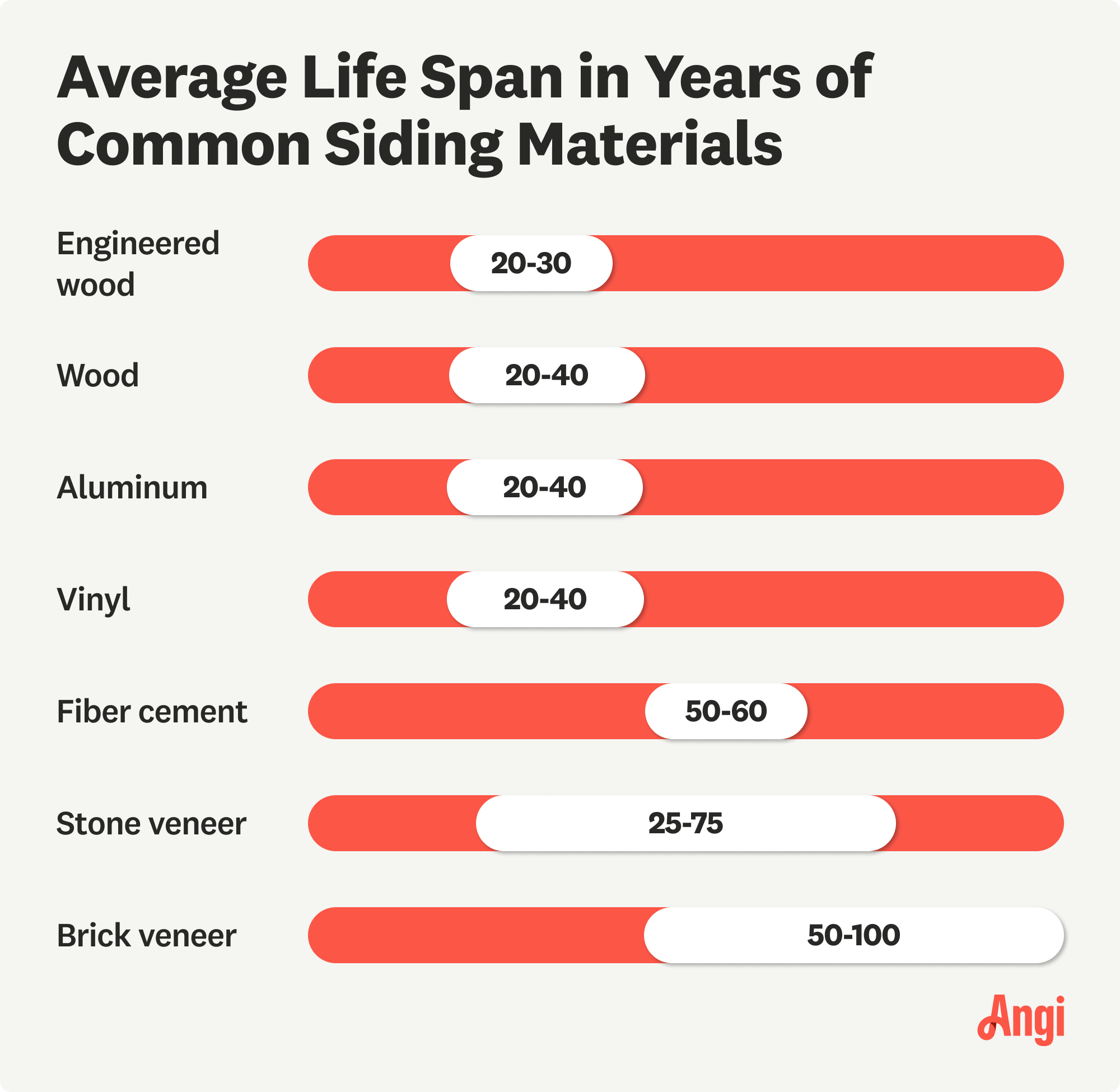
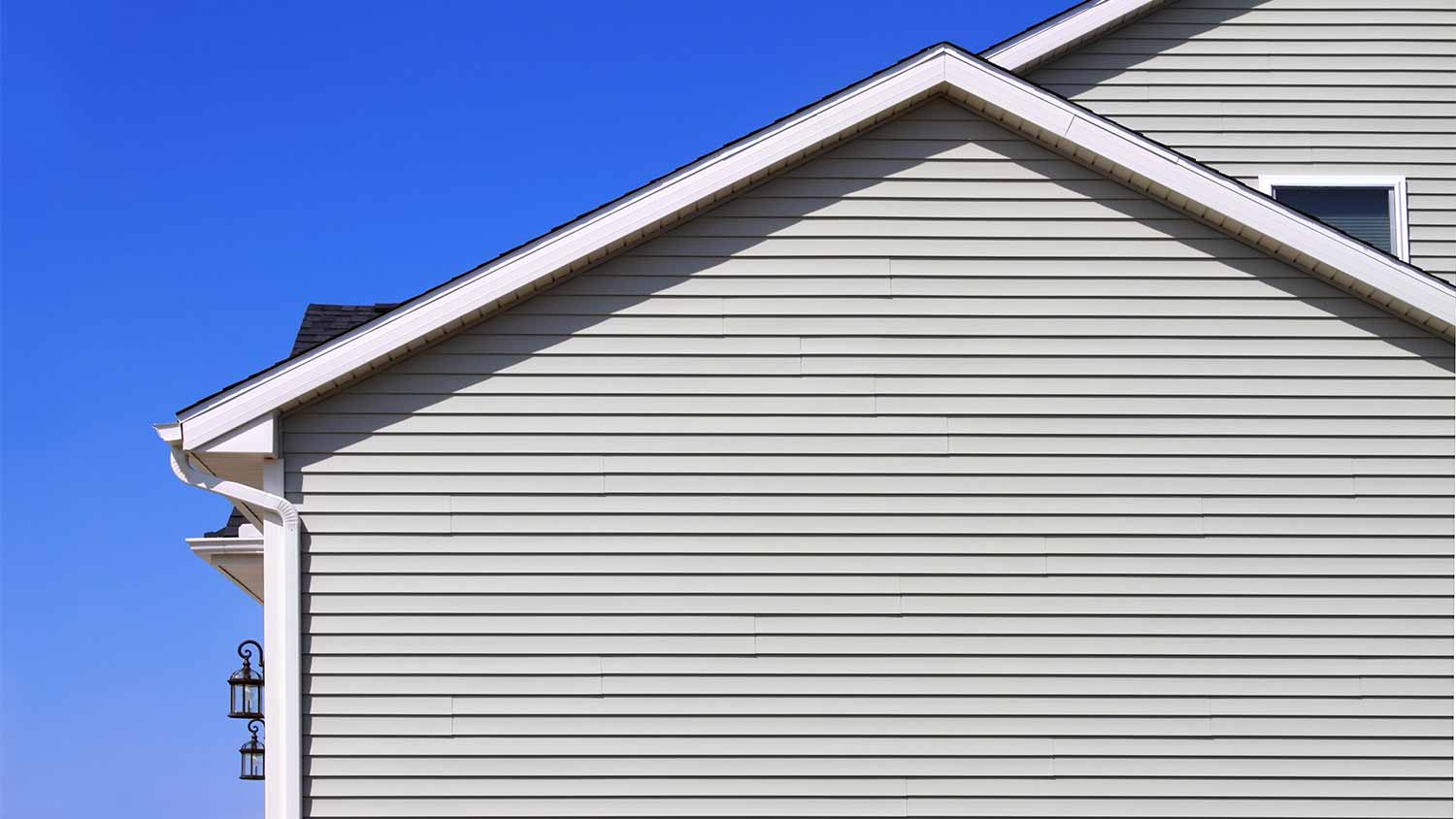
Vinyl siding is one of the most popular types of house siding for modern homes—and for good reason. It’s affordable, it’s easy to install, and it comes in a variety of colors and styles. But another key reason to choose vinyl siding? It’s super low-maintenance.
You won’t ever need to paint or stain it, and cleaning vinyl siding is as easy as running the power washer. Even if you’re not comfortable with a pressure washer, you can usually find affordable power washing companies near you. You can also scrub vinyl siding by hand, using a cloth or soft brush and a bucket of soapy water, which makes removing dirt, grime, and other debris a breeze. Plus, you only need to wash vinyl siding every two to three years.
It can crack from impact and fade over time with exposure to intense sunlight, but routine maintenance is minimal.
When you’re ready to call a local siding contractor to handle installation, you can expect vinyl siding costs of $3 to $12 per square foot, making it one of the most affordable low-maintenance siding options.
| Pros | Cons |
|---|---|
| Affordable | Environmental impact |
| Low maintenance | Minimal insulation |
| Durable | Less luxurious in appearance compared to other siding options |
| Widely available | Can crack and fade |
Best for: Budget-conscious homeowners looking for minimal maintenance requirements
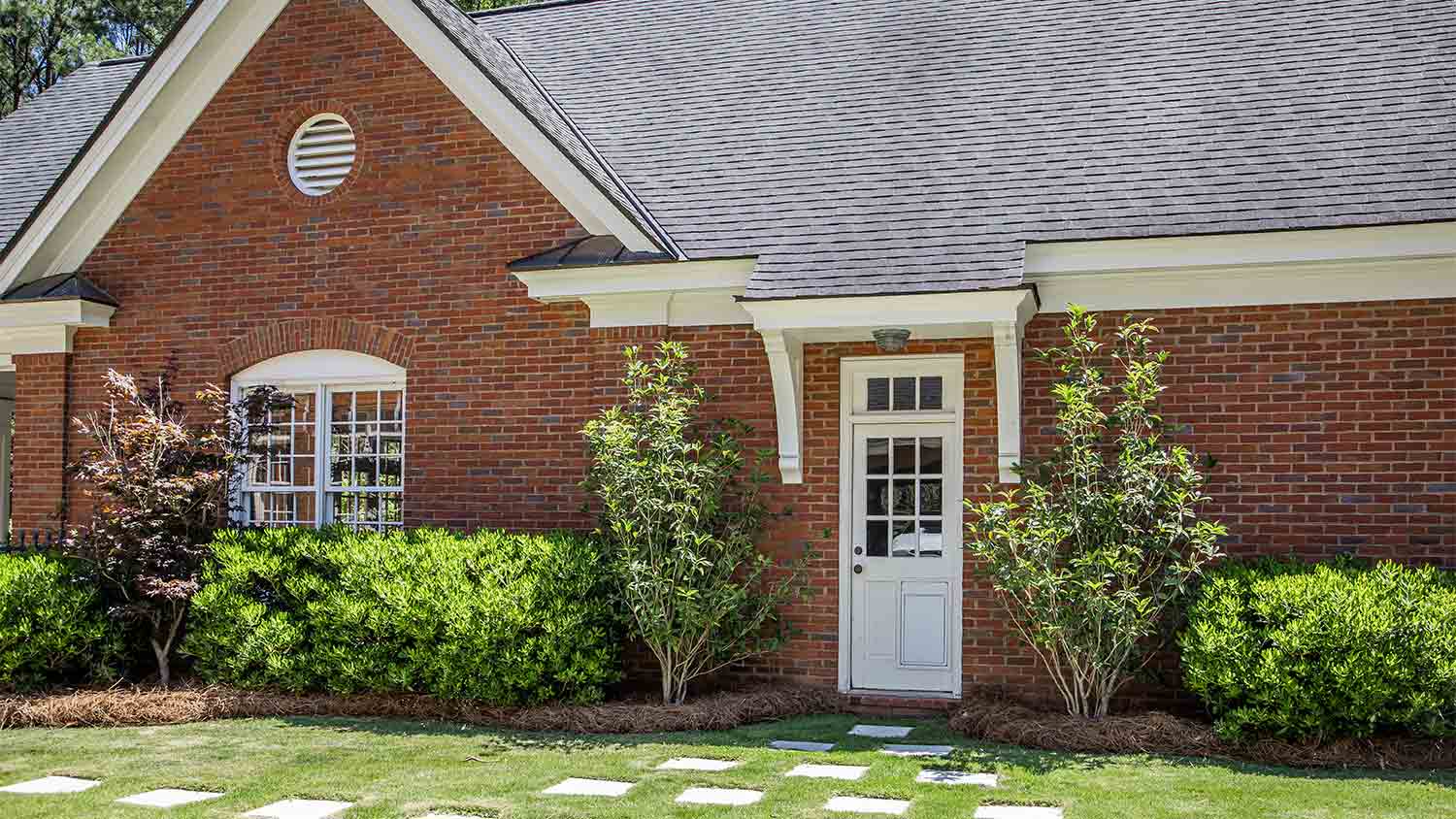
Brick is one of the most durable, longest-lasting siding materials. One of the pros of a brick house is that the siding requires minimal maintenance during its 50- to 100-year lifespan, but it also ages well and won’t detract much from your curb appeal when it does.
Brick siding is also eco-friendly. It’s made from natural materials such as clay and shale, and you can repurpose the bricks if you ever knock down a wall or an entire structure. Brick walls are also fire- and weather-resistant, stand up well against mold and mildew, and are great insulators and noise blockers.
You can paint brick walls to change the appearance of your home, but it isn’t necessary as far as brick maintenance goes. In fact, maintaining brick mostly entails just cleaning the exterior once a year.
However, brick is one of the most expensive siding options, costing $10 to $20 per square foot. Although repairs aren’t necessary often, things like tuckpointing or repointing are also expensive when you do need them.
Tuckpointing costs $500 to $2,500 for 100 square feet of brick
Repointing a brick house costs $400 to $2,500 for 100 square feet.
While these repairs are costly, quality work done by an experienced masonry contractor near you should last you decades.
| Pros | Cons |
|---|---|
| Durable | Expensive |
| Long lifespan | Costly repair work |
| Low-maintenance | Little customization |
| Eco-friendly | |
| Fire-resistant |
Best for: Homeowners who don’t mind spending more upfront for lower long-term costs
Brick veneer is another low-maintenance option that looks similar to brick. Brick veneer costs less than half of the real thing up front—just $3 to $10 per square foot, and while it doesn’t last as long, it requires the same minimal maintenance.

Fiber cement siding has a lot going for it: it’s durable, it’s available in a range of colors and designs (it can mimic masonry, stucco, wood, etc.), it doesn’t need frequent repainting, and—for the homeowner who wants to take it easy—it’s relatively low-maintenance.
Fiber cement siding costs $5 to $14 per square foot. Its moderate price point is one of the reasons fiber cement has become so popular in the last several decades, but homeowners are also drawn to it for its durability and ease of maintenance.
That doesn’t mean it’ll last forever (that’s one of many myths about fiber cement siding), but it does mean you or a local fiber cement siding contractor will only have to clean the siding about once a year, keep your landscaping trimmed back, and paint it once every 10 to 12 years.
You should also visually inspect the caulk once a year and re-caulk as needed. Here’s how to caulk siding if you’re new to the chore.
Ultimately, keeping up with fiber cement siding maintenance will require minimal work compared to some other options, and with the long lifespan, you’ll get tons of value from it.
| Pros | Cons |
|---|---|
| Durable | Difficult installation |
| Low maintenance | Moderately priced |
| Customizable | Little insulation |
| Fire- and weather-resistant | Not recyclable |
Best for: Homeowners who want durability, minimal maintenance, and a wide range of style choices at a reasonable up-front cost

Stucco is a somewhat divisive siding—you either love it or hate it. But its affordability, durability, traditional aesthetic, and ease of maintenance make stucco a smart choice for homeowners who live in hot, dry climates. Stucco absorbs moisture, so it will require far more maintenance and repairs in areas that see a lot of rainfall or high humidity.
Stucco siding costs between $7 and $9 per square foot, including labor and materials. Once it’s installed, maintaining stucco siding is pretty straightforward. You’ll mostly just need an annual cleaning, which you can tackle yourself.
Outside of cleaning, you only need to seal your stucco every five years or so and repair damage as it appears. Repairing stucco siding on your own is relatively easy (you’ll need about four hours for small repairs), but you can also hire a stucco repair contractor near you if you don’t have the time or know-how, or if you have a smooth stucco finish that makes repairs more challenging.
Best of all, stucco can last for 50 years, on average, if you maintain it properly.
| Pros | Cons |
|---|---|
| Durable | Dry climates only |
| Low maintenance | Hard to install |
| Relatively affordable | Difficult to repair |
| Fire/pest-resistant |
Best for: Homeowners who live in dry climates and want to reduce cooling costs in warmer areas
EIFS siding is a six-layer stucco application that includes a moisture barrier and a layer of insulation under synthetic stucco. Synthetic stucco is more expensive, but it reduces maintenance due to increased durability and moisture resistance.
If you love the look of stucco and have the budget for it, EIFS is well worth the investment to maintain the look while enjoying better durability, less upkeep, and greater curb appeal over time.
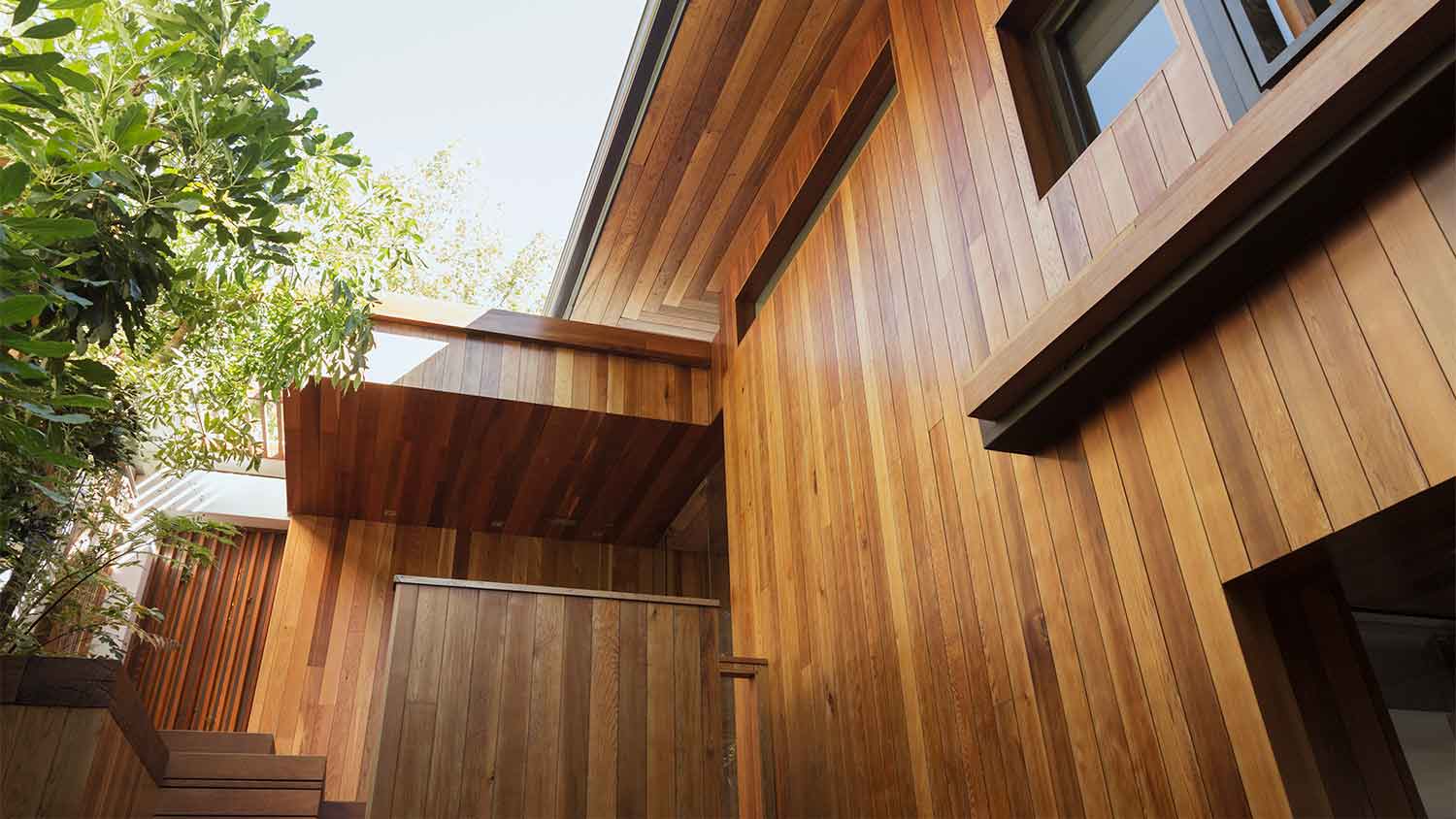
Wood is a stunning siding material—but it’s certainly not low maintenance. Engineered wood can provide a similar appearance and similar customization with different siding styles at a lower up-front cost. It will also leave you with far less maintenance.
Engineered wood is pest-resistant and more fire-resistant than traditional wood siding, and it won’t rot or crack as easily with exposure to water and moisture. Especially with high-end products, you’ll see less color fading over time than with wood, and you won’t need to paint or stain it every few years.
Engineered wood doesn’t look quite as nice as real wood and some other natural siding options, like brick or stone, but it’s more affordable than the cost of cedar siding and offers good value for the money and low-maintenance living.
| Pros | Cons |
|---|---|
| Durable | Not eco-friendly |
| Low maintenance | Curb appeal |
| Affordable | Can’t refinish |
| Customizable |
Best for: Homeowners looking for an affordable, low-maintenance option that mimics real wood

While aluminum siding isn’t as popular as it once was, steel siding is a nice choice if you’re into the industrial aesthetic and want something that’s easy to maintain. Steel siding is resistant to fire, mold, and mildew.
The upfront cost of steel siding is steep, sitting as high as $16 per square foot, but it requires minimal maintenance, so ongoing costs over time can make up for the initial investment. You’ll need to clean your steel siding about once a year, but you won’t need to paint, seal, or winterize it.
| Pros | Cons |
|---|---|
| Very durable | High upfront cost |
| Low maintenance | Difficult to install |
| Industrial aesthetic | Prone to dents |
| Fire-resistant | Minimal insulation |
Best for: Homeowners who don’t mind an industrial aesthetic and a high up-front cost in exchange for virtually no maintenance
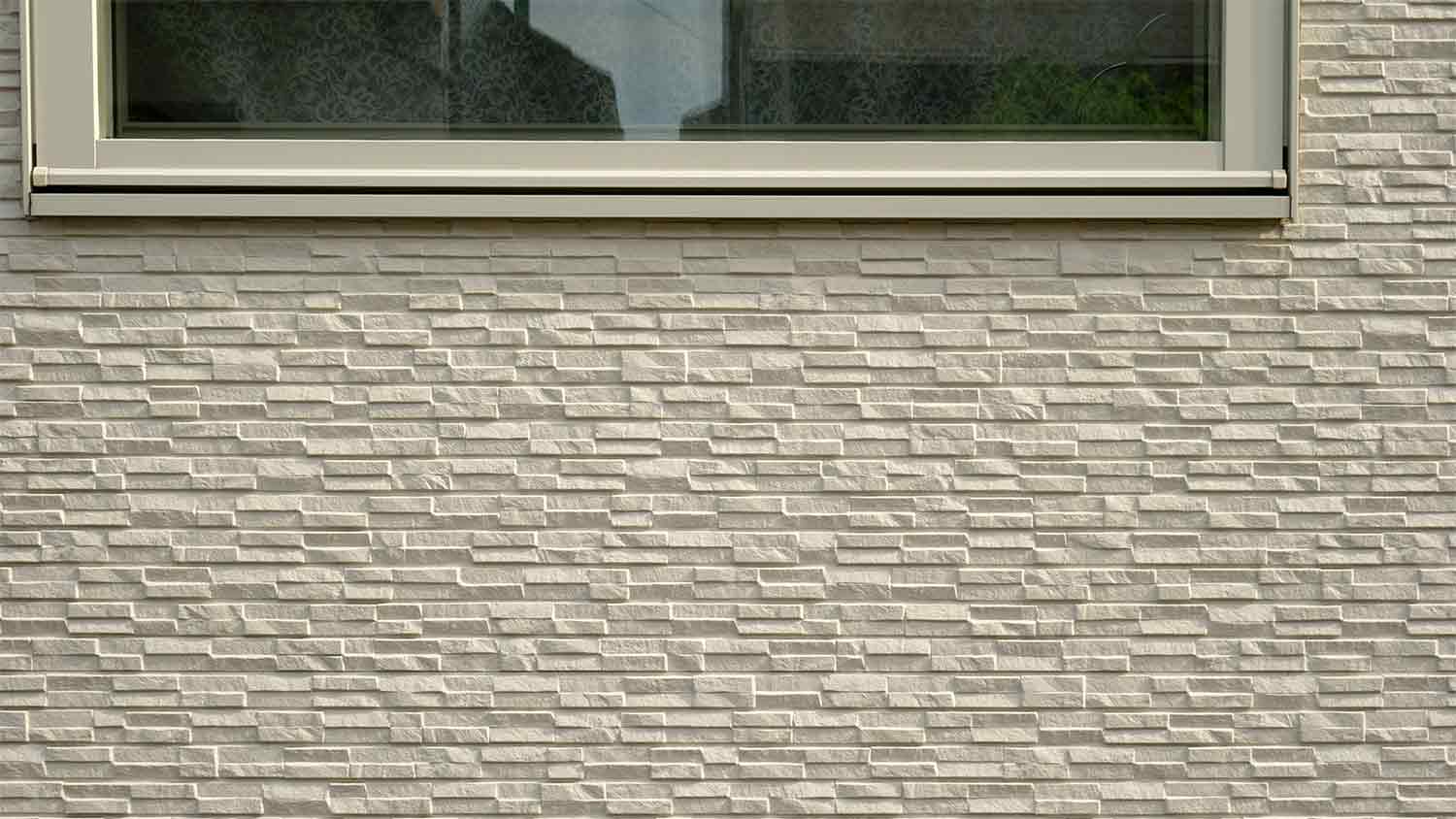
Stone veneer siding offers the aesthetic appeal of traditional stone siding but at a fraction of the cost. You’ll need to budget just $5 to $11 per square foot for the cost of stone veneer siding, while true stone siding can go up to $30 per square foot.
Stone veneer siding is fire- and moisture-resistant, and it won’t harbor mold or mildew. You also won’t need to paint it, and ongoing maintenance just involves an annual cleaning.
Stone veneer is more affordable than real stone siding, but it’s still relatively expensive. It’s also quite heavy and may require structural changes to your home to install safely, which can further drive up your costs.
| Pros | Cons |
|---|---|
| Beautiful aesthetic | Expensive |
| Low maintenance | Little customization |
| Long-lasting | Not recyclable |
| High ROI |
Best for: Homeowners who want a traditional look with minimal maintenance, and those who want to mix and match siding materials
The market is full of house siding options that are easy to maintain. If you’re struggling to choose the best option, there are a few things to consider to hone in on the best one for your siding project.
Cost: First and foremost, what’s your budget? Some siding options are more expensive than others. If you’re paying out of pocket (i.e., not taking out a home equity loan to fund your siding update), you may be limited to more affordable options. Steel and brick might be out of reach.
Geographic location: Some siding options make more sense in certain areas. Stucco, for example, is ideal for drier climates. If you’re in an area prone to wildfires, avoid vinyl, which will melt quickly when exposed to flames.
Insulation: If you live in an extreme climate, consider how your new siding will affect your home’s efficiency and your heating and cooling bills. Stucco is a great option in hot climates, while brick is one of the more insulating materials in colder climates. Some types of vinyl siding, like insulated vinyl, have the highest R-value of any siding and can be solid, low-cost alternatives for efficiency.
Aesthetics: What siding is most eye-catching to you? It’s your house, after all; you’ll want to love coming home to it every day. Beyond your own personal tastes, consider the mass appeal, especially if you plan to list your home for sale within the next decade.
And if you can’t pick just one, consider mixing siding types to get a more unique and customized final product that doesn’t skimp on the low-maintenance benefits.
Even when you go with a low-maintenance siding material, you’ll still need to carry out some maintenance and hire a local siding repair pro to carry out more intensive repairs from time to time. Understanding these maintenance costs will help you budget for the long term.
| Maintenance Task | Frequency | Cost |
|---|---|---|
| Painting | Every 5–10 years | $1,800–$4,600 |
| Power washing | Annual | $200–$500 |
| Repairs | As needed | $2–$50/sq. ft. |
| Visual inspection | Annual | DIY |
From average costs to expert advice, get all the answers you need to get your job done.

New siding can boost your home value, energy efficiency, and curb appeal. Learn about the cost to install shingle siding to budget appropriately.
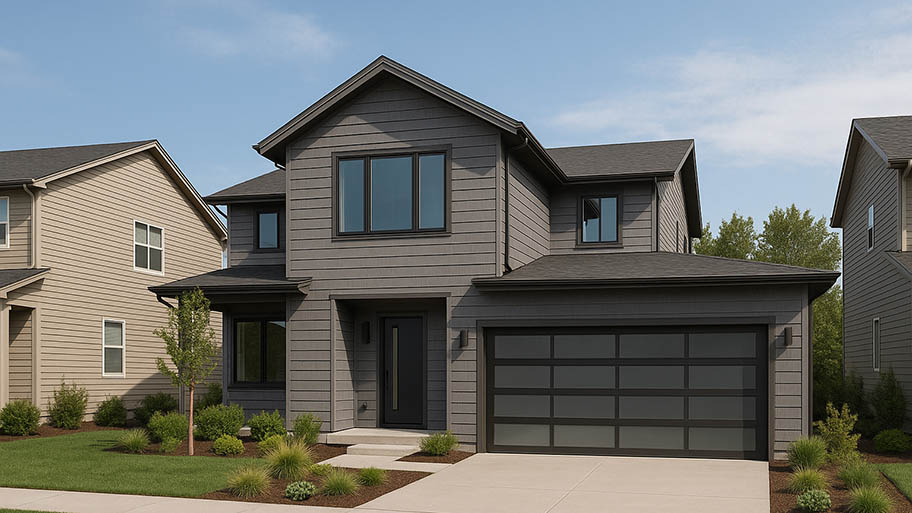
Cedar, pine, cypress, or fir—wood siding is a durable and elegant choice for the outside of your home. Here are the wood siding costs to expect.
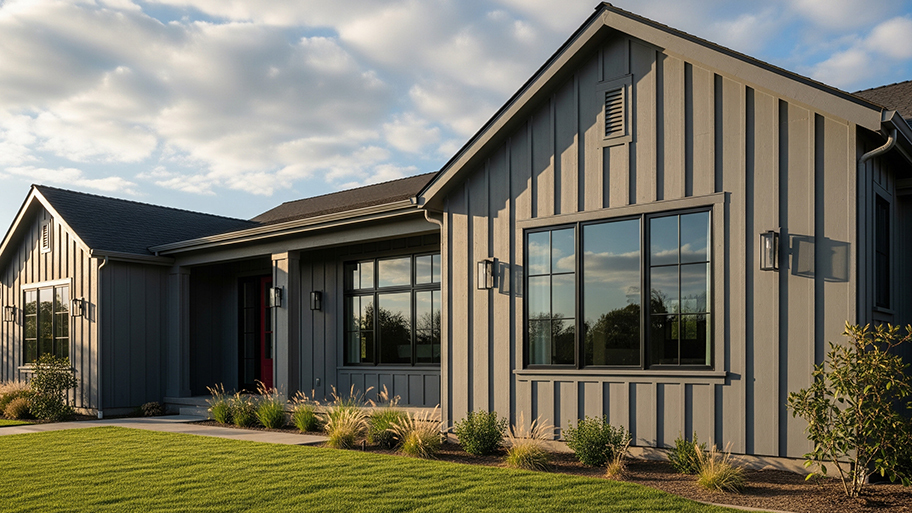
How much does board and batten siding cost? Our cost guide breaks down material and labor costs and offers tips to save money on your new siding.

It's the age-old siding debate: to caulk or not to caulk Hardie Board. In most cases, Hardie Board discourages caulk use, but it's important to see the whole picture.

Learn more about the best types of cement siding and their benefits for your home.

When installing siding, you may find rotted boards underneath the old siding. Siding is your home’s first line of defense against the elements–rot causes damage that can spread, so learn about what to do when you discover rotted boards.